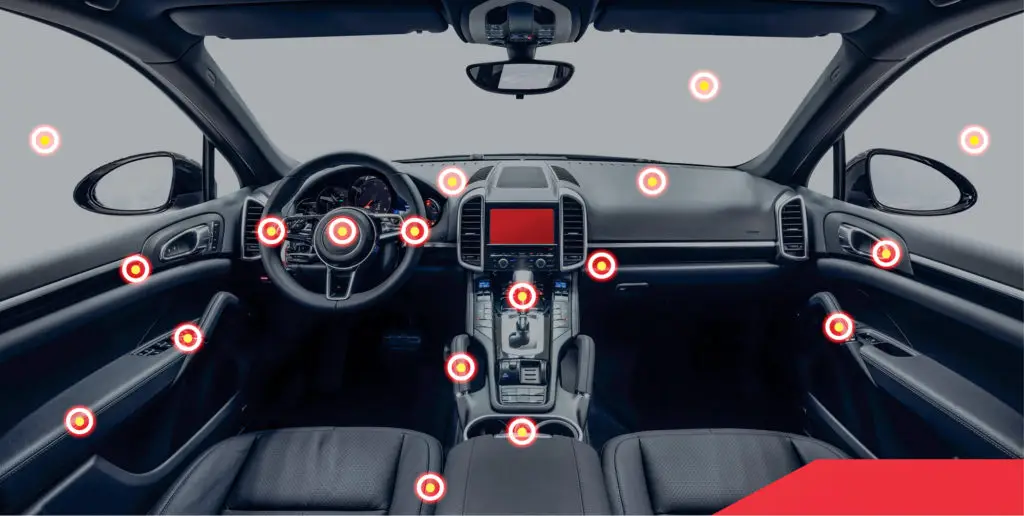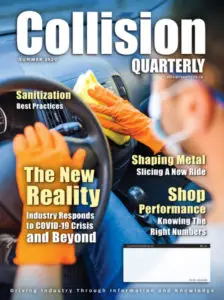Having best disinfecting practices in place is key to getting back into business after the first wave of COVID-19.
by Sarah Bruce
Even as COVID-19 restrictions ease, the damage has been done and glass and collision shops across the country have seen a decrease in business. The best way forward now is to implement lasting disinfection procedures to ensure technicians and customers feel safe.
In late March, Speedy Glass, a Belron Canada banner, implemented a new disinfection service that removes 99.9 percent of contaminants that may be on main contact surfaces. Targeting 30 contact points on a vehicle—10 on the outside (door handles and windows, rear trunk button, etc.), and 20 on the inside (steering wheel, dashboard controls, seat belts, glove compartment, etc.)—Speedy Glass has pledged to disinfect every vehicle before and after service.
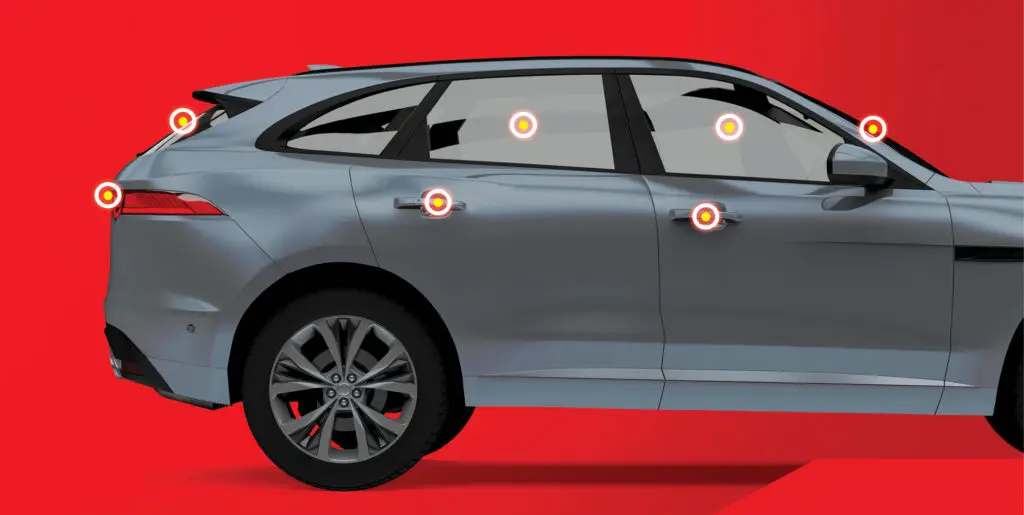
“As a responsible company operating in such a critical time, this new disinfection service is an opportunity for us to reiterate our commitment to making our service centres safer for our employees as well as our customers,” said Sylvie Leduc, vice president, brand and customer promise.
They take the best of all ideas and always come up with the best for everybody.”
Belron has shops in 35 countries. With operations in Italy and the U.K., where the pandemic hit three to four weeks earlier than it did in Canada, Belron was poised to start developing a sanitization protocol early on. “All the locations in 35 countries share experiences and ideas with one technical department located in the U.K.,” said Leduc. “They take the best of all ideas and always come up with the best for everybody.”
Leduc thanked the teamwork of glass shops around the world and their technical technicians—who through a “more, less, and why?” testing procedure identified the 30 areas that needed to be decontaminated—for developing this service.
When it came to implementing the procedure in shops, they had to consider how to go from, “Okay, now we have this process,” to, “Let’s make it happen.”
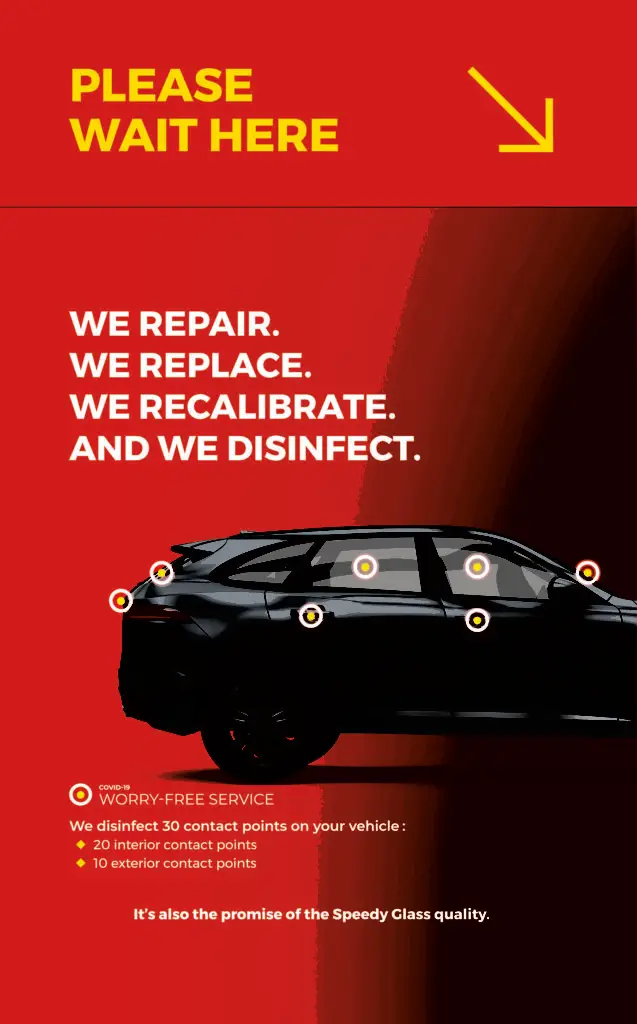
“We had to let go of many of our employees during the crisis because business went down as low as 80 percent in the first week or two,” said Leduc. With the implementation of their new disinfection service, service centers were able to reopen but not before first dedicating time for managers to educate and communicate the new rules to the employees to help them adapt to the new way of doing their job.
Employees were educated through training, creative videos, and a series of documents displayed both in the back-end for employee knowhow and at point-of-sale stations so customers can see what steps of decontamination are being taken to maintain their health and safety while their vehicle is serviced.
There will continue to be consumer demand for this type of process”
When asked if Leduc believes that this newly implemented process will be maintained even after COVID-19, she said, “There will continue to be consumer demand for this type of process and from insurance companies, who have been very supportive of us during this time. They have even been subsidizing a portion of incremental fees in order for us to be able to provide this service because they understand the financial pressure on our industry. It will be mandatory for us to offer this until the crisis is over.”
Five Protective principles in place in service centres:

Principle 1 – Check employee health status: Employees’ health is checked at the beginning of each shift to ensure that they are free from COVID-19 symptoms. Enhanced hygiene measures have also been adopted, including mandatory hand washing several times a day.
Principle 2 – Limit employee interaction: Travel between service centres is kept to a minimum, with telephone conversations prioritized.
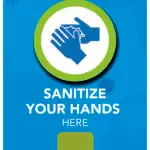
Principle 3 – Maintain a distance of two metres: Every effort is made to maintain a distance of two arms or two metres between customers and/or colleagues. Meal times and delivery processes have been reviewed to optimize distancing. Stickers have been placed on floors to indicate the acceptable distance for waiting in line.
Principle 4 – Limit sharing of tools, sanitize equipment and focus on personal protection: Gloves must be worn at all times and checklists have been posted in designated areas for employees. Tools and equipment are assigned to a single team where possible, and all shared equipment is regularly sanitized.
Principle 5 – Regulate visits and interactions with customers: All customer interactions are contactless. Upon arrival of a customer, car keys are deposited in a box and immediately sanitized. Required documents are shared electronically, and cash payments have been suspended. Wait time is limited, and a windshield is used as a protective panel at the customer service counter.
Four protective principles for technicians:
Principle 1 – Ensure personal protection: Goggles must be worn, and protective nitrile gloves frequently changed.
Principle 2 – Keep a clean work environment: Tools and work surfaces must be kept clean and frequently washed.
Principle 3 – Apply the safety protocol for working on a vehicle: High-touch areas and surfaces on vehicles must be cleaned and handled carefully. Protective covers, which have been provided for vehicle seats and steering wheels, must be used when working on a vehicle.
Principle 4 – Limit unnecessary contact: All unnecessary contact and maneuvers must be avoided to preserve the health of customers and employees.
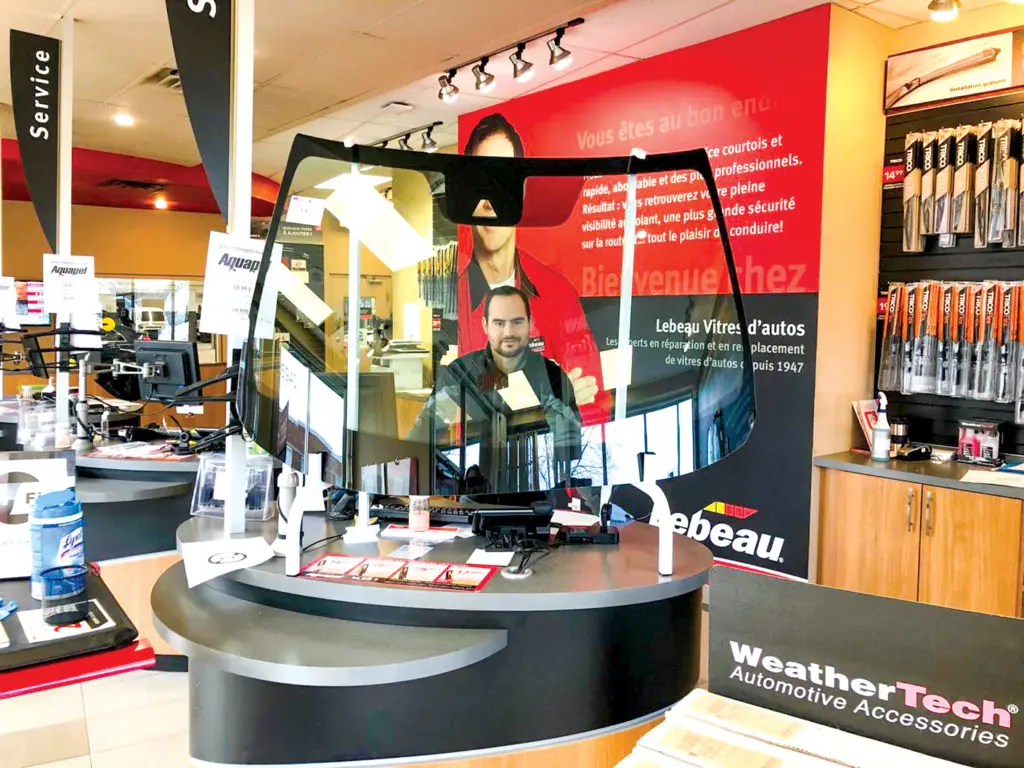
barrier between customers and staff.

